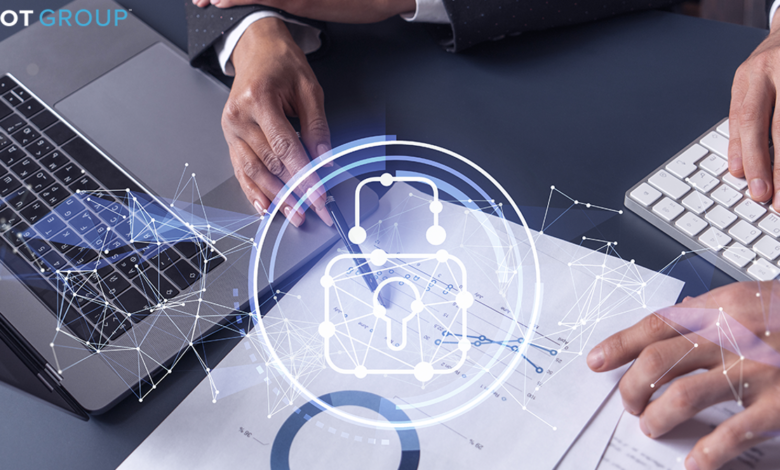Emerging Trends in Intellectual Property Rights Protection
Explore the latest trends in intellectual property rights protection, including blockchain, AI, smart contracts, and global enforcement strategies.

New developments in the defence of intellectual property rights are changing the way that inventions and creative works are protected. Protecting the rights of artists and promoting innovation in equal measure are made possible by intellectual property rights, or IPR. Adapting IPR protection tactics is more crucial than ever in the modern, fast-paced digital world where new technologies are emerging quickly. This progression guarantees that innovators and enterprises can persist in prospering within a setting that safeguards their intellectual property.
Rapid technological breakthroughs, such as blockchain and artificial intelligence, are altering not only how we create content but also how we safeguard intellectual property. These developments make it easier to tackle problems like piracy, counterfeiting, and unauthorised usage by providing new tools and techniques for monitoring, controlling, and enforcing IPR. As we examine these new developments, it becomes evident that utilising these technological developments to build a strong, effective, and international system of protection is essential for the future of intellectual property rights protection.
Emerging Trends in Intellectual Property Rights Protection
Historical Perspective of Intellectual Property Rights
To understand where we’re headed, it’s essential to look back. IPR laws have a rich history, dating back centuries. The concept of protecting one’s creative works was formalized during the Renaissance, with significant milestones like the Statute of Anne in 1710, which laid the groundwork for modern copyright law. Over time, these laws have expanded and adapted, reflecting changes in society and technology.
Current Landscape of Intellectual Property Rights
Today, IPR laws vary across the globe but share common goals. Key organizations like the World Intellectual Property Organization (WIPO) oversee these laws, ensuring a standardized approach to IPR protection. Countries work within frameworks provided by treaties such as the TRIPS Agreement to safeguard intellectual property internationally.
Technological Advancements and IPR
The digital age has revolutionized IPR. Digital technology has introduced both opportunities and challenges in protecting intellectual property. Artificial Intelligence (AI) is playing an increasing role, assisting in tasks like patent searches and copyright enforcement. These advancements require IPR laws to adapt continuously.
Emerging Trends in Intellectual Property Rights Protection
As we move further into the 21st century, several emerging trends are shaping the future of IPR protection:
Blockchain Technology
Blockchain is revolutionizing IPR by providing a transparent and immutable ledger of ownership and transactions. This technology ensures that once a piece of intellectual property is registered on a blockchain, its ownership and transaction history cannot be altered, significantly reducing the risk of infringement and fraud.
Smart Contracts
Smart contracts, enabled by blockchain, automatically enforce the terms of a contract when predefined conditions are met. In IPR, this means royalties can be automatically distributed to creators without the need for intermediaries, ensuring timely and accurate payments.
Digital Rights Management (DRM)
Digital Rights Management (DRM) systems have evolved significantly, now incorporating advanced encryption and tracking technologies to protect digital content from unauthorized use and distribution. Innovations in DRM ensure that creators maintain control over their digital works, even as they are shared and distributed online.
Challenges in IPR Protection
Despite these advancements, significant challenges remain:
Cybersecurity Threats
The digital nature of modern intellectual property makes it vulnerable to cyber-attacks. Hackers can steal sensitive information, disrupting businesses and costing creators millions. Enhanced cybersecurity measures are essential to protect IPR in this digital era.
Counterfeiting and Piracy
Counterfeiting and piracy remain rampant issues. The ease of reproducing digital content and the global nature of the internet make it difficult to control and enforce IPR laws, leading to substantial financial losses for creators.
Global Enforcement Issues
Enforcing IPR across borders is a complex task. Differences in legal systems and enforcement mechanisms make it challenging to protect intellectual property internationally. Cooperation between countries and international bodies is crucial to address these issues effectively.
Role of Artificial Intelligence in IPR
AI is becoming a powerful tool in the IPR arsenal:
AI-Driven Patent Searches
AI can quickly analyze vast amounts of data, making patent searches more efficient and accurate. This reduces the time and cost associated with patent applications and helps inventors ensure their creations are unique.
AI in Copyright Protection
AI algorithms can monitor digital platforms for unauthorized use of copyrighted material, ensuring that creators’ rights are upheld. These systems can detect and flag potential infringements faster than traditional methods.
Predictive Analysis for IPR Infringement
AI can predict potential IPR infringements by analyzing trends and patterns. This proactive approach allows for quicker responses to potential violations, protecting intellectual property before significant damage occurs.
Blockchain and Intellectual Property Rights
Blockchain technology offers several benefits for IPR protection:
How Blockchain Ensures Transparency
Blockchain’s immutable ledger provides a transparent record of ownership and transactions. This transparency helps resolve disputes and verifies the authenticity of intellectual property, reducing the risk of fraudulent claims.
Examples of Blockchain Applications in IPR
Various industries are adopting blockchain for IPR protection. For instance, the music industry uses blockchain to track the distribution and ownership of songs, ensuring artists receive fair compensation. Similarly, fashion brands are leveraging blockchain to authenticate their products and combat counterfeiting.
Smart Contracts and IPR Enforcement
Smart contracts streamline IPR enforcement:
Definition and Benefits of Smart Contracts
Smart contracts are self-executing contracts with the terms directly written into code. They offer several benefits, including reducing the need for intermediaries, ensuring timely payments, and automating compliance with IPR agreements.
Case Studies of Smart Contract Applications
In the publishing industry, smart contracts can automatically distribute royalties to authors when their books are sold. This ensures authors are compensated fairly and promptly. Similarly, in the software industry, smart contracts can manage licensing agreements, automatically enforcing the terms and conditions.
Digital Rights Management (DRM) Systems
DRM systems are crucial for protecting digital content:
Overview of DRM Systems
DRM systems control access to digital content, preventing unauthorized use and distribution. They use encryption and access control mechanisms to ensure only authorized users can access protected content.
Innovations in DRM Technology
Recent innovations in DRM include watermarking, where unique identifiers are embedded in digital content to trace its distribution. Additionally, advanced tracking technologies monitor the use of digital content, identifying potential infringements and ensuring compliance with IPR laws.
International Cooperation in IPR Protection
International cooperation is vital for effective IPR protection:
Role of WIPO and Other International Bodies
Organizations like WIPO play a crucial role in harmonizing IPR laws and facilitating international cooperation. They provide frameworks and guidelines to help countries enforce IPR consistently and effectively.
Cross-Border IPR Enforcement
Cross-border enforcement of IPR requires collaboration between countries. This involves sharing information, coordinating enforcement actions, and harmonizing legal standards to ensure intellectual property is protected globally.
Read More: How to Choose the Best Lawyer for Criminal Cases in the UK
Conclusion
Technological developments are driving profound changes in the intellectual property rights protection landscape. Blockchain, AI, and smart contracts are examples of emerging technologies that are completely changing the way we protect and manage intellectual property. These developments present fresh chances to improve intellectual property security, efficiency, and transparency. It is imperative that innovators, companies, and legislators remain knowledgeable and engaged in embracing these technologies as we negotiate these shifts.
The protection of intellectual property rights has a bright future since technology is enabling solutions to persistent problems like global enforcement, piracy, and counterfeiting. We can build a stronger, more resilient system that protects innovation and creativity by embracing these new trends. It will be crucial to keep abreast of these developments as the digital era develops if intellectual property is to continue serving as a catalyst for both cultural and economic advancement.
FAQs
What are Intellectual Property Rights?
Intellectual Property Rights are legal protections granted to creators for their inventions, literary and artistic works, designs, symbols, and other intellectual creations.
How does blockchain technology benefit IPR?
Blockchain provides a transparent and immutable ledger of ownership and transactions, reducing the risk of infringement and fraud.
What challenges does IPR face in the digital age?
Challenges include cybersecurity threats, counterfeiting and piracy, and difficulties in enforcing IPR across borders.
How can AI help in protecting IPR?
AI can streamline patent searches, monitor digital platforms for unauthorized use, and predict potential IPR infringements.
What is the future of Intellectual Property Rights?
The future of IPR includes further integration of technology, such as AI and blockchain, and continuous adaptation of laws to protect intellectual property effectively.











